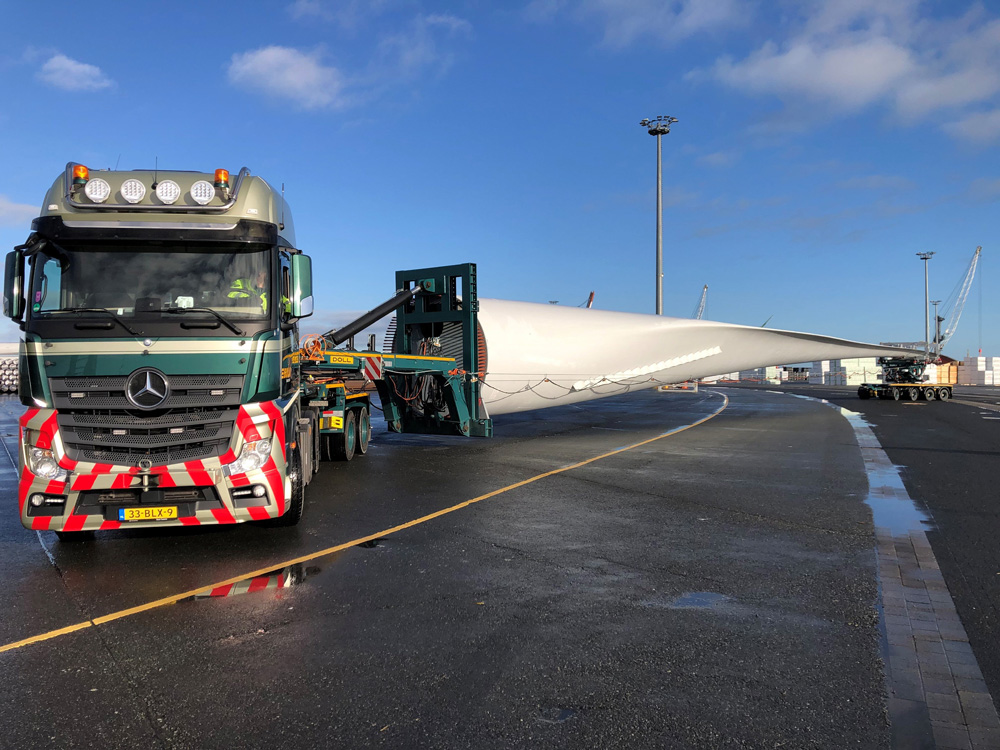Doll wind blade transport systems for Bolk Transport
3 February 2021Almelo, Netherlands-based Bolk Transport has expanded its fleet with two more wind blade transport systems from German trailer manufacturer Doll.
Doll’s wind blade transport systems are based on its proven series of trailers. They combine mechanical or hydraulic lifting adapters with special bolsters and trailers.
Bolk Transport opted for hydraulic lifting adapters on a dolly, which according to the manufacturer provide enough reserve capacity to accommodate the steady increase in rotor blade length and weight.
With a dead weight of approximately 7-7.3t (depending on the choice of equipment) and a maximum fifth-wheel load of 30t, the dolly has a remaining load capacity of around 23t. Working at the other end of the system, the four-axle vario self-steering trailers boast a load capacity of around 32t with a total technical weight of 40t.
With the addition of the two systems, Bolk Transport now has three of these in its fleet. Managing director Joop Savenije, said: “Wind turbines have three blades, but it’s not like you transport one to its destination, then go back for the other two. So you need three vehicles – one for each blade.”
Previously, Bolk Transport had relied solely on telescopic trailers to transport wind power components. However, as rotor blades began exceeding 65m in length, alternative solutions had to be found. “We’re now increasingly seeing blades approaching 75m long – and they’re getting heavier too”, said Savenije. “We found that Doll’s self-steering trailer combinations offered the best solution for what we needed.”
In mid-January, the Seaport of Brake in Germany provided the location for the first trial loading operation. Bolk project manager Emil Leushuis said: “What makes the trailer technology so good is that the rotor blade is self-supporting and there are much more flexible options for navigating obstacles. There’s also a tiltable lifting adapter at the front, and the equipment is able to get round bends much more smoothly. The extensive slewing angle and attached turntable make it possible to position the dolly and self-steering trailer at an almost entirely transverse angle to the bolster, while the vehicle keeps on going.”
